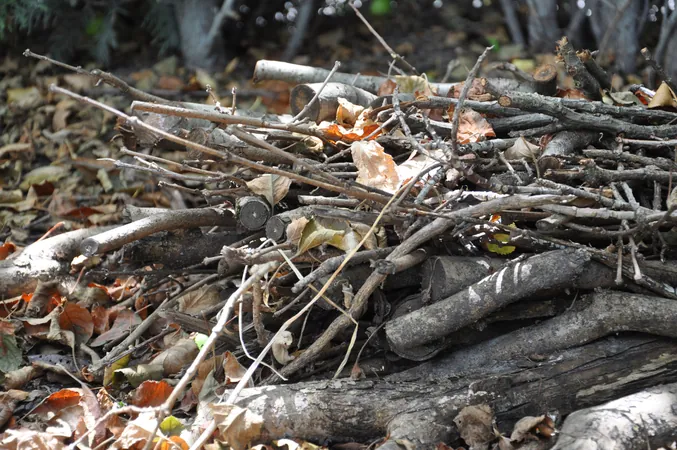
Unlocking Nature's Hidden Decomposers: A Bioinformatics Breakthrough
2025-08-28
Author: Wei
The Secret Life of Decay
When trees succumb to death, they become a cradle for new life. This transformation isn’t a job for the elements but is orchestrated by countless tiny organisms that work quietly yet tirelessly. From fungi weaving through decaying wood to insect larvae munching on fallen leaves, these decomposers play a crucial role. They release stored carbon back into the ecosystem, feeding new growth and enabling the cycle of photosynthesis to continue.
Decoding the Enzymatic Heroes
But have you ever wondered what exactly drives this decomposition process? What molecular tools do these organisms wield? A groundbreaking study published in *Molecular Biology and Evolution* unveils a novel bioinformatics method that answers these pressing questions.
Meet fDOG: A Game-Changer in Genomic Analysis
Enter fDOG (Feature architecture-aware directed ortholog search), an innovative method that allows researchers to sift through the genetic blueprints of numerous organisms to find genes evolved from a common ancestor—known as orthologs—encoding proteins with similar roles. For this study, scientists targeted genes responsible for breaking down plant cell walls, or plant cell wall-degrading enzymes (PCDs). Unlike traditional methods, fDOG delves deep into the genetic makeup, analyzing protein structures to unveil their functional capabilities.
Professor Ingo Ebersberger from Goethe University Frankfurt explains, "We initiate our search using a gene from one species, acting as a seed, and then explore across tens of thousands of species to pinpoint orthologs. Throughout, we assess any functional and structural variations of these genes."
A Global Enzyme Map Revealed
Employing fDOG, the research team identified over 200 promising candidates among more than 18,000 species spanning all life domains—bacteria, archaea, and eukaryotes (including plants, animals, and fungi). This comprehensive exploration has produced an unprecedented global map of enzymes capable of breaking down plant cell walls.
Unveiling Surprises in the Fungal and Animal Kingdoms
The research utilized unique visualization techniques to decode the data and uncover evolutionary patterns. Surprisingly, certain fungi exhibited shifts from decomposers to parasites, altering their enzyme repertoire as they adapted to infesting live hosts. Additionally, an intriguing finding among arthropods revealed a rich diversity of plant-degrading enzymes, likely inherited from ancestors through horizontal gene transfer.
In another twist, some identified potential PCD genes were traced back to microbial contamination, stressing the importance of meticulous data verification.
A Fresh Lens on the Global Carbon Cycle
This study exemplifies how fDOG can systematically uncover biological roles and capacities throughout life's intricate tree, providing insights into evolutionary trajectories and bringing to light organisms previously neglected in the carbon cycle. Given that decomposing plant matter underpins the largest terrestrial carbon sink, these insights are critical for understanding climate dynamics.
Ebersberger concludes, "Our method offers a novel perspective on how metabolic functions are distributed across life forms, enabling us to conduct expansive analyses to reveal both recent evolutionary developments and overarching trends."




 Brasil (PT)
Brasil (PT)
 Canada (EN)
Canada (EN)
 Chile (ES)
Chile (ES)
 Česko (CS)
Česko (CS)
 대한민국 (KO)
대한민국 (KO)
 España (ES)
España (ES)
 France (FR)
France (FR)
 Hong Kong (EN)
Hong Kong (EN)
 Italia (IT)
Italia (IT)
 日本 (JA)
日本 (JA)
 Magyarország (HU)
Magyarország (HU)
 Norge (NO)
Norge (NO)
 Polska (PL)
Polska (PL)
 Schweiz (DE)
Schweiz (DE)
 Singapore (EN)
Singapore (EN)
 Sverige (SV)
Sverige (SV)
 Suomi (FI)
Suomi (FI)
 Türkiye (TR)
Türkiye (TR)
 الإمارات العربية المتحدة (AR)
الإمارات العربية المتحدة (AR)